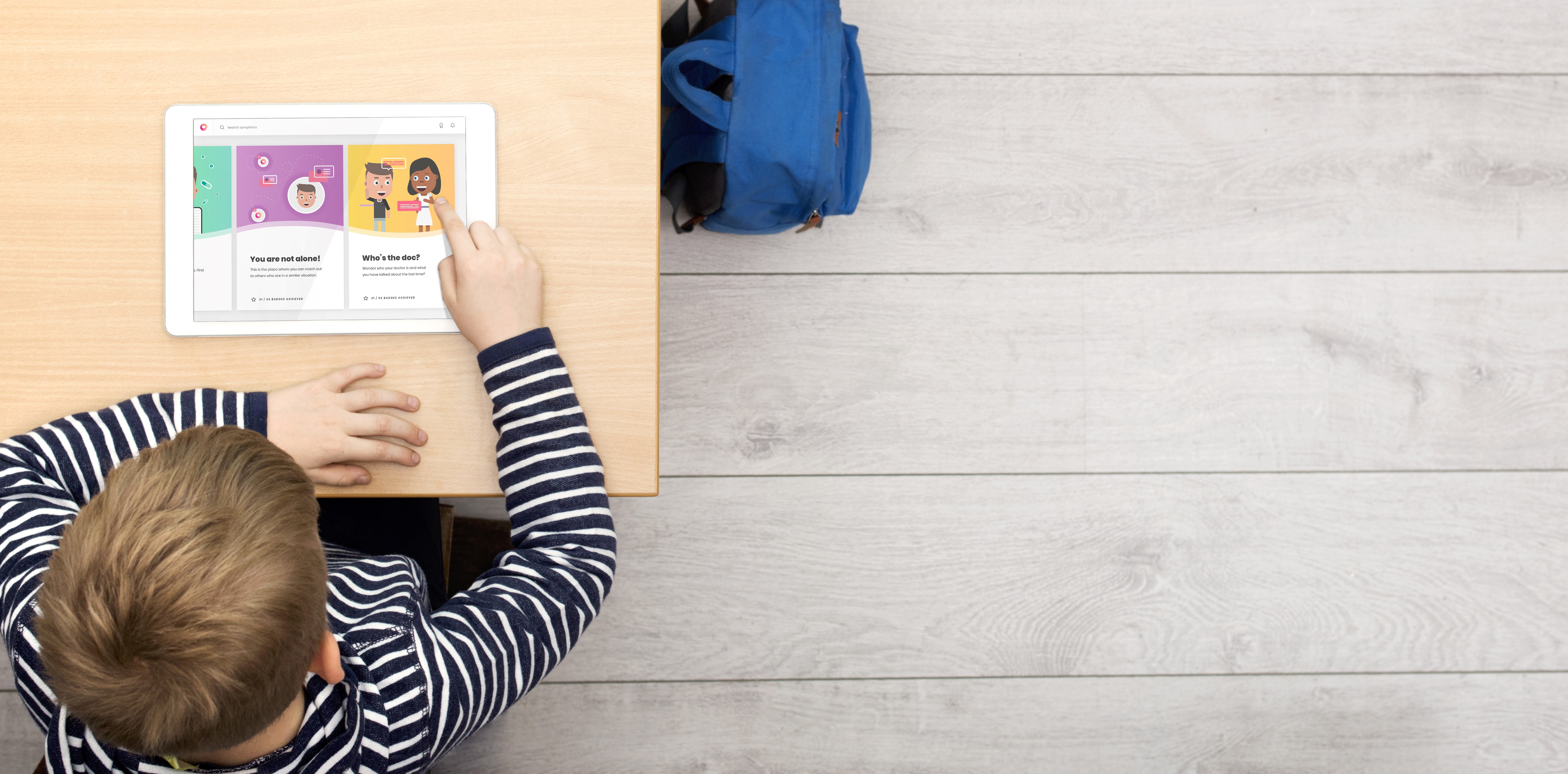Posted by Daan Hekking on January 16, 2019
Last November I wrote about a personalised health literacy application, which I developed as part of my master in Advanced Product Design, for children who recently have been diagnosed with a form of IBD. In this previous article, I explained why we should improve our health education for this target group and what the benefits could be if children become more interested in educating themselves independently about their newly diagnosed disease. This article will dive into the actual health education application, which is called Pling.
Education does not stop after the handover of text and illustration from a caregiver to a child; it should be seen as an initiator and an ongoing opportunity for a child to learn how to talk with the right people in order to feel more comfortable living their life with a newly diagnosed disease.
Pling uses three guiding principles to get kids interested in and to keep them learning using this health education application. First, native or web-based applications allow us to integrate reward systems into a digital application. Reward systems have been proven to be effective for this target group as it gives them an understanding there is more to achieve after collecting one reward. Pling leverages this principle in a smart way and stimulates the continuation of further education. Second, the app allows the child to choose a character, which functions as a resemblance of him or her. Their character then converts the most relevant, IBD-related information into age appropriate health literacy (child friendly text with extensive use of illustrations). The third principle targets the topic of mastery learning. The aim of Pling is not to convert patients into paediatricians, but rather to allow them to start conversations and ask questions regarding their disease. Therefore, the chapters are extremely short and the child can learn more after he or she has seen the absolute basic information regarding a specific topic. Pling is built upon this structure, meaning it continuously unlocks two new levels after completing one level. This reduces the amount of visible educational topics in the app, showing the child their progress toward completed everything that’s visible on the screen, rather than showing them they have only completed 5% of the app.
The importance of a proper onboarding process
After being connected with and retrieving information from a patient’s EHR, the child will go through a short onboarding program. This is where Pling greets the child in a friendly manner, asks him or her to choose a character and explains the benefits of the four chapters Pling has. It tells the child, in a conclusive way, that they recently have been diagnosed with Crohn’s disease or ulcerative colitis (variable added by caregiver) after experiencing certain symptoms (variable added by caregiver) and that they have been put on a treatment (variable added by caregiver), which will help keep them healthy and prevent previously experienced symptoms.
What the …?!
One of the core chapters of Pling regards understanding the implications of a diagnosed chronic disease, in this case Crohn’s disease, on your overall well-being. The name of this chapter ‘What the …?’ is chosen because lots of children do not understand why this disease is targeting them and might feel lost in understanding the implications of it. Once the child opens this chapter, they can choose between different subjects. These subjects are ranked in such a way that the child will first learn more about what’s inside their own body, why this occurs to their body and what the effects of Crohn’s disease are on their body. In a somewhat conversational and rather playful way, through the integration of small questions, the child will gradually become more familiar with the basics of IBD.
Just beat it!
The second chapter ‘Just beat it!’ provides insights about treatment and relevant coping strategies. The subjects range from current medication, sport recommendations, communication strategies, dietary recommendations, alternative therapies and additional services that are provided by profit or nonprofit organisations. More importantly, with the help of visuals and storytelling, an abstract pill can be contextualised. Using an example of white, circular pills, children will follow a journey in which the pill is the main character and shows in a visual way the effects it has on a human body and their overall well-being. Education is a serious issue, but the information that is being shown to the child does not always have to be shown on a serious note. Since a goal of the app is to help children become more vocal about disease-related issues through better education, humour is a powerful tool to use to achieve that goal.
Currently, I’m pushing for Pling’s further development. Two categories, ‘You are not alone’ and ‘Who’s the doc’, haven’t been designed nor developed yet. It takes more hands to get it off the ground and if you are someone who would like to contribute and support its development, please do reach out to me. In 2019 I'll be looking to test Pling’s efficacy, by connecting with paediatric care centers that are interested in piloting this digital application. It would be great to get in touch to discuss how Pling could extend or replace your current educational programs. Looking forward to hearing from you.
- Daan
--
Stay in the LOOP - sign up for updates and never miss a post!
Read more posts by Daan on LOOP >>




